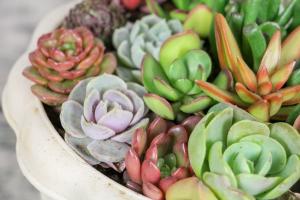Which Tomato Plants Yields More Fruit
Tomato plants are a popular and vital crop among many farmers and gardeners. However, not all tomato plants are created equal in terms of yield. Some factors such as soil, weather conditions, and varieties of tomatoes can impact the amount of fruit produced. In this article, we will examine the different types of tomato plants and what you can do to increase your yield.
Determinate vs. Indeterminate Tomato Plants
Determinate and indeterminate tomato plants are the two main types of tomato plants. Determinate tomato plants are smaller, grow to a certain height, and set their fruit all at once. Indeterminate tomato plants are larger, continue to grow throughout the season, and produce fruit continually until frost.
If your goal is to harvest a large crop and preserve it all at once, determinate tomatoes may be the best choice. However, if you want to harvest tomatoes throughout the season or want to sell them, indeterminate tomatoes are a better choice.
Heirloom vs. Hybrid Tomato Plants
Another factor that influences the yield of tomato plants is the type of plant. Heirloom tomato plants are open-pollinated, meaning the pollen is spread naturally or by insects. Hybrid plants are cross-pollinated, and the seeds are artificially created, usually by humans.
In general, heirloom tomato plants produce a lower yield than hybrid plants. However, heirloom tomatoes are often more flavorful, while hybrids are valued for their disease resistance and uniformity.
Sunlight and Soil
Tomatoes require a lot of sunlight and nutrients to produce fruit. They also like well-draining soil that is rich in organic matter. If your tomato plants are not getting enough sunlight, they may develop fewer flowers, which will lead to lower yields.
If your soil lacks nutrients, your tomato plants may not grow as well, and you will get a lower crop yield. You can add compost, manure, or other organic matter to improve nutrient levels in the soil. Phosphorus and potassium are essential nutrients for tomato plants, and you can add a fertilizer that is high in these nutrients to the soil.
Spacing
The distance between tomato plants can also affect their yield. If you plant tomato plants too close together, they can become crowded and compete for nutrients, water, and sunlight. This can cause a reduction in yield, as well as an increased risk of diseases.
To avoid crowding, space your tomato plants at least two feet apart from each other. If you are planting indeterminate tomatoes, you may need to stake or support them to prevent them from growing into each other.
Conclusion
In conclusion, the type of tomato plant, sunlight, soil, and spacing can all affect the amount of fruit your tomato plants produce. If you want a large crop all at once, determinate tomato plants may be best for you. If you want to harvest tomatoes throughout the season, or want to sell them, indeterminate tomato plants are a better choice. Hybrids will often produce a higher yield than heirloom tomato plants, but they may not be as delicious.
Improving your soil with organic matter, providing sufficient nutrients, and spacing your plants properly can also help to maximize your tomato yields. By taking these steps, you can grow delicious, healthy tomatoes your family and friends will love.

 how many times do yo...
how many times do yo... how many planted tre...
how many planted tre... how many pine trees ...
how many pine trees ... how many pecan trees...
how many pecan trees... how many plants comp...
how many plants comp... how many plants can ...
how many plants can ... how many plants and ...
how many plants and ... how many pepper plan...
how many pepper plan...
































